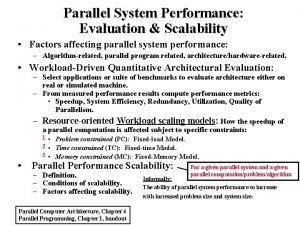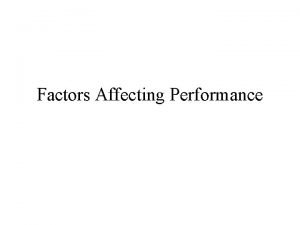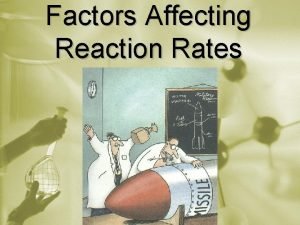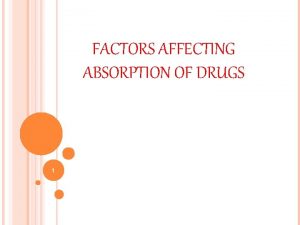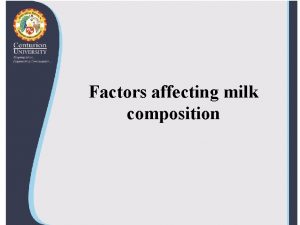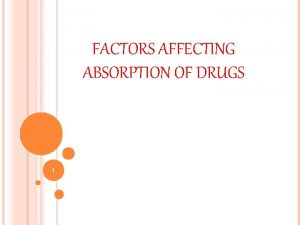Factors Affecting Performance How does training affect performance












- Slides: 12

Factors Affecting Performance How does training affect performance?

§ Students learn about: § Energy Systems § Alactacid system (ATP/PC) § Lactic acid system § Aerobic system Critical Question 1: How does training affect performance? § Students learn to: § Analyse each energy system by exploring § Source of fuel § Efficiency of ATP production § Duration that the system can operate § Cause of fatigue § by-products of energy production § Process and rate of recovery

§ Energy systems need to be covered first in order to understand everything else covered under how does training affect performance § Many types of training match with particular energy How does training affect performance? systems § Principles of training help you understand how the types of training and their methods are modified and adapted to ensure they are producing the physiological adaptations wanted § We will look at the physiological adaptations to training (changes your body makes to the stress of training in order to make training easier next time)

§ Energy systems provide the energy required by muscles for movement § Body requires energy to be in the form of ATP (Adenosine Energy Systems Tri-Phosphate) – this allows for energy to be converted from chemical energy into mechanical (movement) energy § 3 main energy systems: § Alactacid or ATP/PC system § Lactic acid system § Aerobic system

§ It is important to remember that the energy systems are all used at the same time to produce ATP, but at particular times in sports, a specific system is dominant § Example Energy Systems § Aerobic system - in AFL when the ball goes out of play and players jog back to position § Lactic acid system – when the full back sprints forward in attack and then needs to sprint back to defend § ATP/PC system – short sprint to the ball or jumping for a mark

Alactacid (ATP/PC) Energy System

Alactacid (ATP/PC) Energy System Sources of fuel Uses the ATP that is immediately available within the muscle cell (myocyte). As the ATP is broken down into ADP and P, the ADP reacts with the PC (without O 2) in the myocyte to produce another ATP and C (1 ATP per PC) Efficiency of ATP production Very fast rate of ATP production, very limited store of fuel. PC runs out quickly so needs to recover before available again Duration that the system can operate Does not last long due to limited fuel source and fast ATP production. ATP/PC system will deplete in 8 seconds when used at maximal intensity – as long as 12 seconds at lower intensity Cause of fatigue Depletion of fuel. Once the immediate stores of ATP and PC run out the system needs to recover before it can be used again By-products of energy production No by-products other than heat – is a by-product of every energy system Process and rate of recovery Recovers as the creatine in the cell connects to the free phosphates again, storing them as PC to be used when needed. Takes up to 2 mins for complete recovery, ½ restored around 30 sec mark Examples 100 m sprint, discus, javelin, high jump – very short duration sports.


Lactic Acid Energy System

Lactic Acid Energy System Source of fuel CHO – Carbohydrates as its only fuel source (This exists in 2 forms: glucose in the blood and glycogen). Relies on anaerobic glycolysis for its production of ATP. Glycolysis is the breakdown of glucose to produce ATP. In anaerobic glycolysis the glucose (sourced from glycogen in the muscle or glucose in the blood) is turned into lactic acid as it produces ATP. Efficiency of ATP production Produces ATP at a fast rate and can produce a lot of ATP. 2 ATP for each glucose molecule it breaks down, however, it also produces lactic acid in the process. Duration that the system can operate Cause of fatigue Between 30 sec and 3 minutes, depending on intensity. Is the build up of lactic acid in the muscle. Although, it is not directly lactic acid that hinders performance, rather it’s the rate of removal – this varies on an individual basis. The build up of Hydrogen in the muscle is the cause of fatigue. By-products of energy production Lactic Acid Process and rate of recovery During the post-exercise period, lactic acid diffuses from the muscle and into the bloodstream where its use as a by-product is important. In the liver, lactic acid is reconverted to glycogen and can once again be used as a source of fuel. The process takes about 30 to 60 mins. This further contributes to the body's efficiency by resynthesising waste for use at a later stage. Examples The lactic acid energy system is the dominant system in sports, which require a high intensity for longer than 10 seconds. Sports such as 200 m or 400 m run, or 50 m and 100 m swim are highly reliant on the lactic acid system.

Aerobic Energy System

Aerobic Energy System Source of fuel Efficiency of ATP production Duration that the system can operate Cause of fatigue Can use CHO, fats and protein as its fuel source. Protein is used sparingly. During early stages, CHO is the preferred fuel, if exercise continues beyond an hour or so, fat becomes increasingly important as a fuel and reigns as the dominant energy source if glycogen supplies become exhausted Very efficient at producing ATP. Produces 38 ATP molecules per glucose but the rate of production is medium and cannot cope with the higher intensity levels. Can produce ATP continuously for over an hour as long as fuel sources can be found. Muscle glycogen will deplete after about an hour of exercise, results in an increased need for oxygen as fats becomes the dominant fuel source and uses more oxygen per ATP produced than CHO. When CHO stores deplete – causes a reduction in intensity. Since fats require more oxygen to produce ATP than CHO, an athlete will normally decrease their intensity when their main fuel source switches from CHO to fats. This is often called hitting the wall. By-products of energy production Water and CO 2. Water can build up and cause stiffness and swelling but is generally transferred out of the muscle and into the blood as water is being lost through sweat. Process and rate of recovery Requires ingestion, digestion and transportation of the fuel and can take between 12 -48 hours, depending on intensity and duration Examples Any sport that lasts longer than 3 minutes. Includes most team sports such as netball, AFL, Rugby League and also individual sports such as 1500 m swimming, marathons
 Factors affecting performance in sports
Factors affecting performance in sports Physiological factors affecting performance
Physiological factors affecting performance Factors affecting performance in netball
Factors affecting performance in netball Factors affecting performance of parallel algorithm
Factors affecting performance of parallel algorithm Factors affecting performance
Factors affecting performance Id psychology example
Id psychology example What two factors determine the force of gravitational pull?
What two factors determine the force of gravitational pull? Ocean currents
Ocean currents What two factors affect the force of friction
What two factors affect the force of friction Dynamics of personality in psychology
Dynamics of personality in psychology Factors that affect disease transmission
Factors that affect disease transmission Factors affecting housing choices
Factors affecting housing choices Factors affecting ksp
Factors affecting ksp



